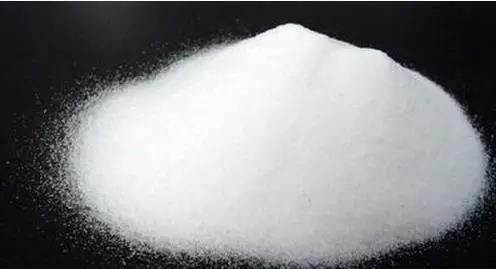Quartz sand is a kind of quartz granule produced by crushing quartz stone.Quartz stone, also known as silica, is a hard, wear - resistant, chemically stable silicate minerals.Quartz sandstone, quartzite and vein quartz exist in nature.Quartz sandstone is a kind of consolidated clastic rock, with quartz clastic content of more than 95%. It comes from all kinds of magmatic rocks, sedimentary rocks and metamorphic rocks. There are few heavy minerals and associated minerals are feldspar, mica and clay minerals.

Quartzite can be divided into two types: sedimentary and metamorphic. The former has no obvious boundary between clastic particles and cement, while the latter refers to the quartz ore with deep and pure metamorphism.Gangue quartz is formed by hydrothermal action, almost entirely composed of quartz, compact block structure.The mineral content of quartz sand varies greatly, mainly quartz, followed by feldspar, mica, rock debris, heavy minerals, clay minerals and so on.
Quartz is a kind of non-metallic minerals, is a hard, wear-resisting, stable chemical properties of silicate minerals, the main mineral composition is SiO2, quartz sand color for the milky white or colorless translucent, mohs hardness 7, sexual brittle cleavage, conchoidal fracture, oily luster, density 2.65, bulk density (1-20 mesh is 1.6), 20-200 mesh is 1.5, the chemical, thermal and mechanical properties has obvious anisotropy, insoluble in acid, slightly soluble in KOH solution, melting point 1750 ℃.
Quartz sand is an important industrial mineral raw material, non-chemical dangerous goods, widely used in glass, casting, ceramics and refractory materials, smelting ferrosilicon, metallurgical flux, metallurgy, construction, chemical, plastic, rubber, abrasive, filter materials and other industries.
I. main specifications of quartz sand
Common specifications of quartz sand are :0.5-1mm, 1-2mm, 2-4mm, 4-8mm, 8-16mm, 16-32mm, 10-20 mesh, 20-40 mesh, 40-80 mesh, 80-120 mesh, 100-200 mesh, 200 mesh, 325 mesh.
Ii. Classification of quartz sand
Quartz sand in the industry is often divided into: ordinary quartz sand, refined quartz sand, high purity quartz sand, fused quartz sand and silica powder.
(1) ordinary quartz sand
1, overview: SiO2 acuity 90-99%, Fe2O3 0.06 to 0.02% or less, refractoriness 1750 ℃, the exterior part of the larger particles, the surface has a yellow skin cyst.Ordinary quartz sand is generally a kind of water treatment filter material made of natural quartz ore through crushing, washing, drying and secondary screening.The filter material has the following characteristics: no impurities, no edges and corners, high density, high mechanical strength, long life cycle of carrying capacity line, and is an ideal material for chemical water treatment.Particle size range 5-220 mesh, can be produced according to user requirements.
2. Main applications: metallurgy, silicon carbide for ink, glass and glass products, enamel, cast steel, water filtration, foam alkali, chemical industry, noise spraying and other industries.
(2) refined quartz sand
1, overview: refined quartz sand, also known as pickling quartz sand, SiO2 99-99.5%, Fe2O3 0.005%, using high-quality natural quartz sand, mortar.
2. Main applications: filter materials, advanced glass, glass products, refractory materials, smelting stones, precision casting, sandblasting, wheel grinding materials, etc.

(3) high purity quartz sand
1. Overview: SiO2 99.5-99.9%, Fe2O3 0.001%, using high-quality natural quartz stone, mortar.
2. Main applications: high-grade glass, electronic filler, smelting stone, precision casting, chemical industry, ceramics, etc.
(4) fused quartz sand
1. Overview: the appearance is colorless transparent block, granule or white powder.Relative gravity: 2.21;Mohs hardness: 7.0;PH value: 6.0.
2. Main application: it is generally used as the main raw material of refractory, ceramic raw material and glass raw material, epoxy resin casting, electronic sealing material, electric light source, medical treatment, casting, and other industries, as well as the ideal filling material for paint, coating and other chemical industries.
(5) silica powder
1. Overview: silica micropowder is made of natural quartz (SiO2) or fused quartz (amorphous SiO2 after high temperature melting and cooling of natural quartz) through multiple processes such as crushing, ball grinding (or vibration, airflow grinding), flotation, pickling purification and high purity water treatment.Silicon powder is non-toxic, tasteless and pollution-free, with good temperature resistance, acid and alkali corrosion resistance, poor thermal conductivity, high insulation, low expansion, stable chemical performance and high hardness.Appearance of gray or gray powder, refractoriness > 1600 ℃.Unit weight: 200 ~ 250 kg/m3.The chemical composition of silica powder is shown in the following table:
2. Main applications: widely used in chemical industry, electronics, integrated circuit (IC), electrical appliances, plastics, paint, advanced paint, rubber, national defense and other fields.
Iii. Brief introduction of quartz sand production process and occupational hazards
Quartz sand processing technology is generally divided into two kinds: one is dry processing, the process is the raw ore primary crushing secondary crushing crushing screening packaging, each link of the process produces a lot of dust;The other is wet processing, process flow is raw ore primary crushing intermediate adding water grinding (grinding, ball grinding or bar grinding) drying screening packaging.The main dust production links are primary crushing, screening and packaging.
The main occupational hazard of quartz sand is dust.Dust detection items are divided into three categories: one is the total dust concentration in the workplace (referred to as total dust), two is the concentration of respiratory dust (referred to as breathing dust, which can enter the lungs of dust), three is the free silica content in dust (dust in the most harmful to human health components).Free silica dust is in the main components of the harm to human body, after enter the lungs, can cause pulmonary macrophages decomposition necrosis, lead to hyperplasia of fibrous tissue, formation of collagen fiber nodules, pulmonary interstitial fibrosis, make the loss of lung tissue elasticity, hardness increases, formation of silicosis, seriously affect the ventilation function.The higher the content of free silica in dust, the greater the harm to human body.






